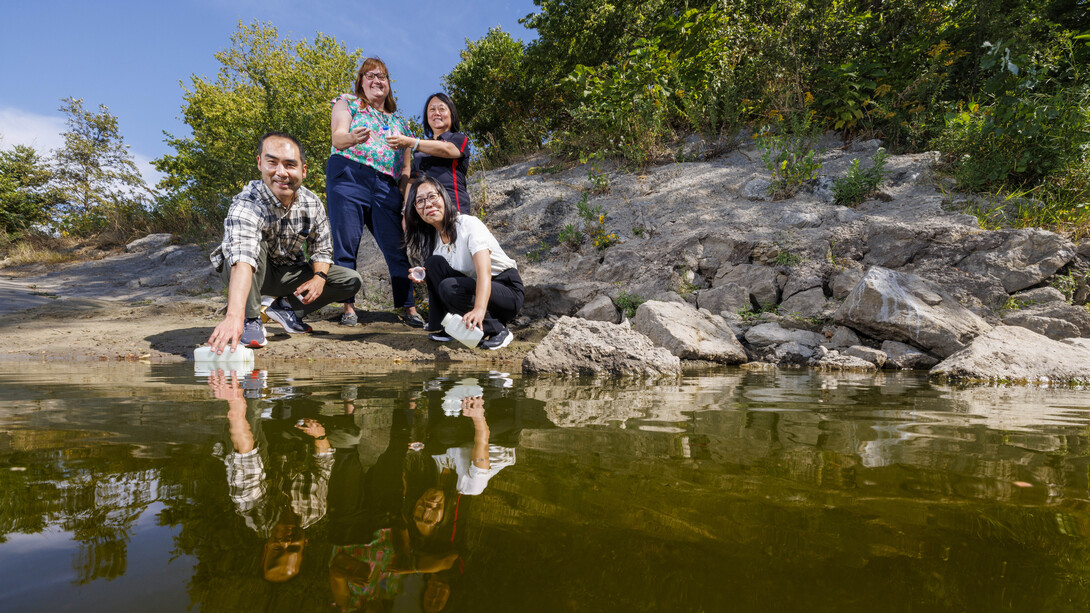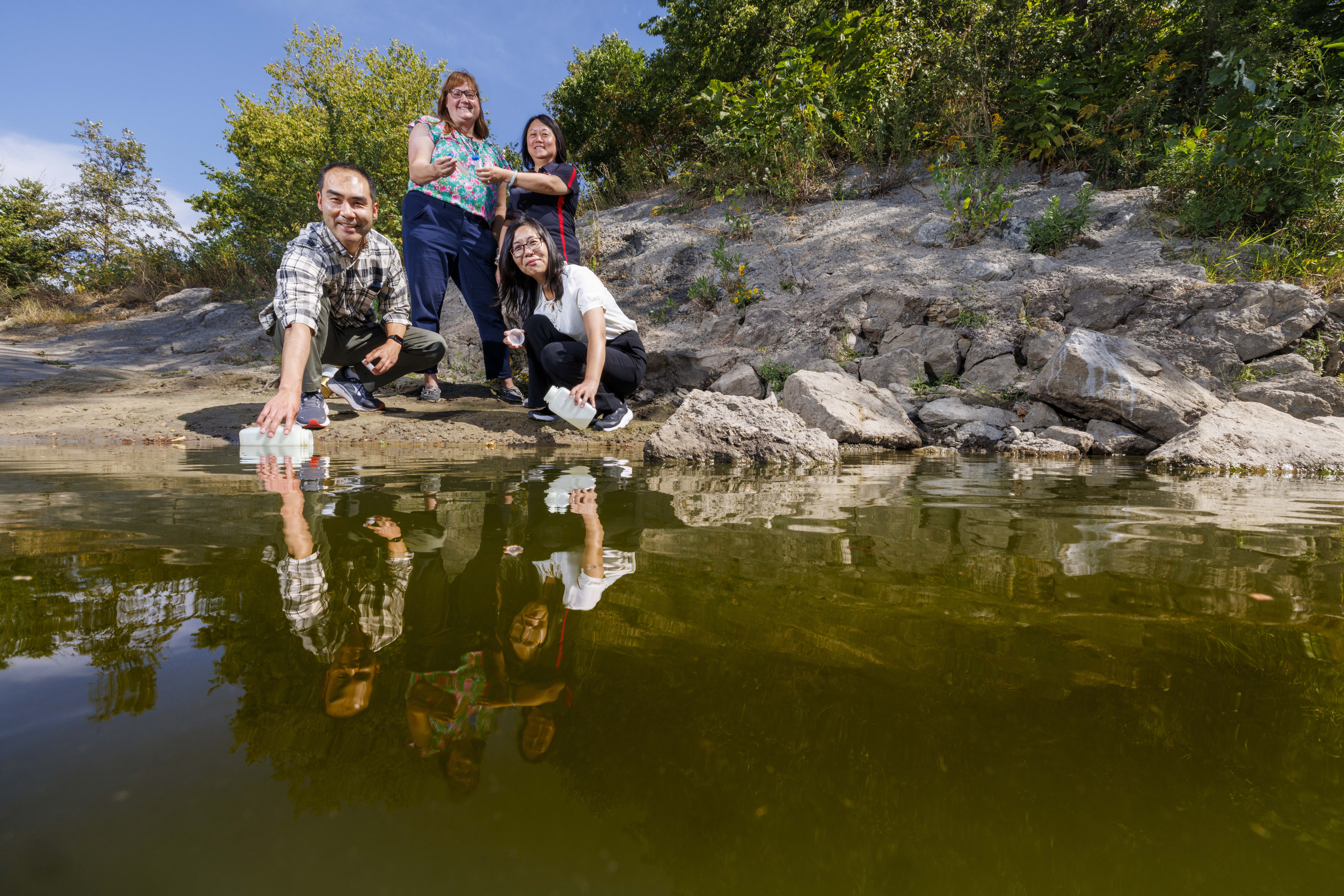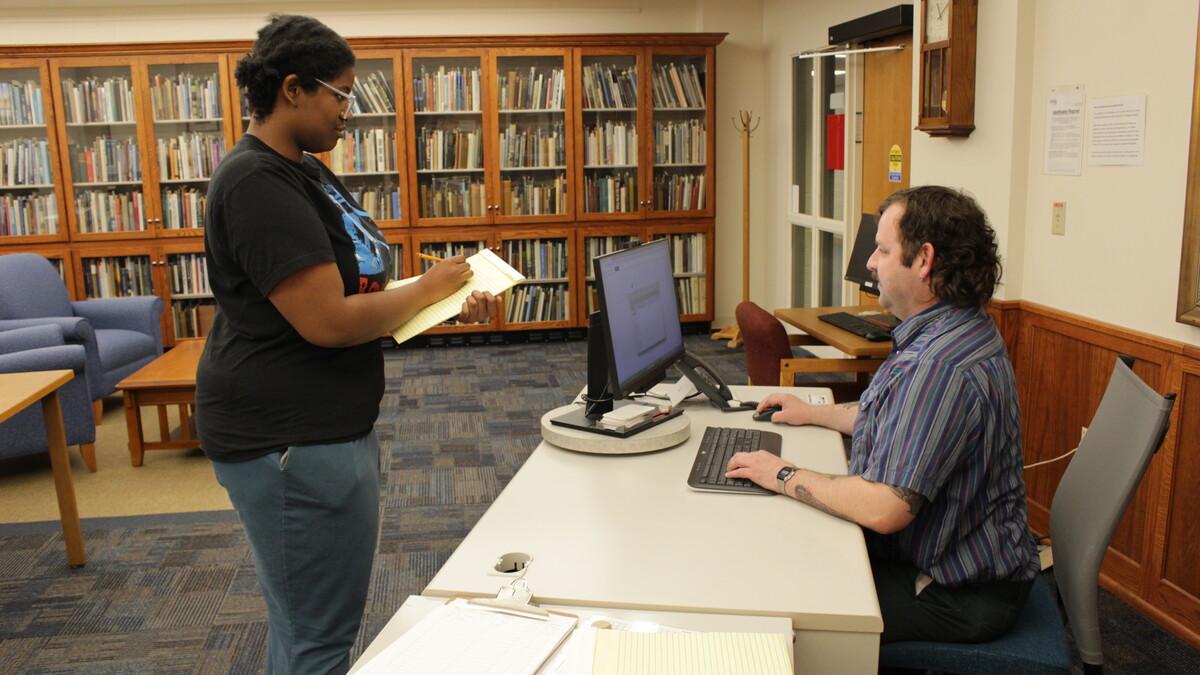
Aided by a $2.4 million grant from the Environmental Protection Agency, a team of University of Nebraska–Lincoln engineers and scientists is leading a multi-state effort to assess the potential threat to human health from antimicrobial-resistant pathogens spread via wastewater and agricultural runoff.
“Traditionally and for good reason, public health experts have focused on clinical settings like hospitals and nursing homes, because that is where patients acquire resistant bacteria,” said Xu Li, the study’s principal investigator. “Now we are seeing that the environment could also be a pathway where people acquire those resistant pathogens — and that is why the EPA is stepping in to look at that.”
Wastewater treatment plants are efficient in removing pollutants in domestic wastewater; however, they are also suspected to be a focal point for introducing antimicrobial-resistant bacteria and antimicrobial resistance genes into the environment via rivers and streams, said Li, who is the Dale Jacobson and Debra Leigh Professor of Environmental Engineering at Nebraska.
Resistant bacteria find their way into wastewater treatment plants, and in turn into rivers and streams, via household use of medications and cleaning products, as well as by discharge from hospitals and antimicrobial manufacturing plants. Antimicrobial bacteria and genes also could be carried into river water through runoff from cropland fertilized with livestock manure or biosolids from wastewater treatment plants.
In addition, antimicrobial resistant bacteria and resistance genes naturally occur in the environment. The EPA is interested in quantifying the antimicrobial resistant bacteria and resistance genes in surface water that are attributable to wastewater treatment plant effluent and biosolids.
Nebraska was one of four institutions awarded a total of $9 million by the EPA for research to address knowledge gaps and better identify and manage antimicrobial resistance risk.
“Antimicrobial resistance is a major concern for public health and the environment,” said Chris Frey, assistant administrator for the EPA’s Office of Research and Development, when the awards were announced in late August. “The research conducted by these grantees will inform how wastewater treatment plants can help manage this risk as we work together to protect our water resources and public health.”
Other Husker researchers involved in the EPA project are Yusong Li and Shannon Bartelt-Hunt, both environmental engineers, and Bing Wang, a veterinary microbiologist and food safety expert.
They will partner with colleagues from Rutgers University, the University of Hawaii at Manoa, the University of California Riverside and Iowa State University to use field samples and modeling to determine the contributions from each source and develop a risk assessment tool to determine the potential threat to human health.
During the three-year project, water samples will be collected from the Elkhorn River in Nebraska, the Raritan River in New Jersey, the Santa Ana River in California and the Hanalei River in Hawaii. Agricultural runoff will be monitored at a research farm in Nebraska.
The selected rivers cover an array of environmental conditions and possible pollution sources, such as wastewater treatment facilities in Nebraska, New Jersey and California, combined sewer overflows in New Jersey, cesspools in Hawaii, animal agriculture in Nebraska and Hawaii, a hospital in New Jersey and a manufacturing plant in Nebraska. Water from the rivers is reused in a variety of ways: sources for drinking water, irrigation and recreation.
The researchers will use shotgun metagenomic sequencing to identify the antimicrobial resistance genes present in their samples and track them to the sources. Li previously used the technique to successfully identify the major source of antimicrobial resistance genes in Antelope Creek, the stream at the heart of a major flood control and community revitalization project in central Lincoln.
Environmental engineers with Iowa State University will assist in building models to more extensively predict how and where antimicrobial-resistant bacteria and genes will proliferate.
The risk assessment tool will allow stakeholders to understand the threat to human health posed by antimicrobial-resistant bacteria and genes present in the rivers they use. By learning the sources of the contaminants, water managers and policymakers could be able to take action to reduce or mitigate human exposure.
Many of the scientists and engineers involved in the EPA study have studied antimicrobial-resistant bacteria and genes for a decade or longer.
Yusong Li and Bartelt-Hunt previously worked with Xu Li to develop “fate and transport” models to determine how antimicrobial-resistant genes move through the soil.
“This project will advance public safety by providing information on the risk of antimicrobial resistance from municipal wastewater and from land-applied biosolids," Bartelt-Hunt said. "It combines my research interests in the fate of emerging contaminants that primarily originate in agricultural and wastewater systems."
Yusong Li said she is excited to develop and calibrate a transport model to estimate antimicrobial-resistant bacteria and antimicrobial-resistance gene levels in runoff.
“This will empower water managers to better assess the significance of antimicrobial resistance from land-applied biosolids,” she said.
Wang is an expert in a risk assessment tool used for food-borne antimicrobial-resistant bacteria.
By adapting risk assessment methodologies used in the food science to an environmental context, Wang said the project will open the door to innovative approaches tailored to environmental science.
“This project will benefit wastewater managers and regulatory authorities by establishing a next-generation risk assessment framework for using surveillance data to assess and manage related human health risks,” she said. “Such a framework addresses critical gaps in our current understanding."
Xu Li also leads a new $900,000 project funded by the U.S. Department of Agriculture's National Institute of Food and Agriculture that will complement the EPA project.
The USDA project takes what is known as a “One Health” approach to antimicrobial resistance, examining how it is transmitted between humans, other animals and the environment. Other leading Nebraska experts participating in the USDA project are Peter Iwen, director of the Nebraska Public Health Laboratory; Dustin Loy, director of the Nebraska Veterinary Diagnostic Center; Matt Hille, assistant professor in the School of Veterinary Medicine and Biomedical Sciences; and Galen Erickson, Nebraska Cattle Industry Professor of Animal Science. Amy Schmidt, a livestock bioenvironmental engineer and Extension specialist in animal science, will lead an outreach program to help livestock producers and consumers fight the spread of antimicrobial resistance.
Share
News Release Contact(s)
Related Links
Tags
High Resolution Photos








